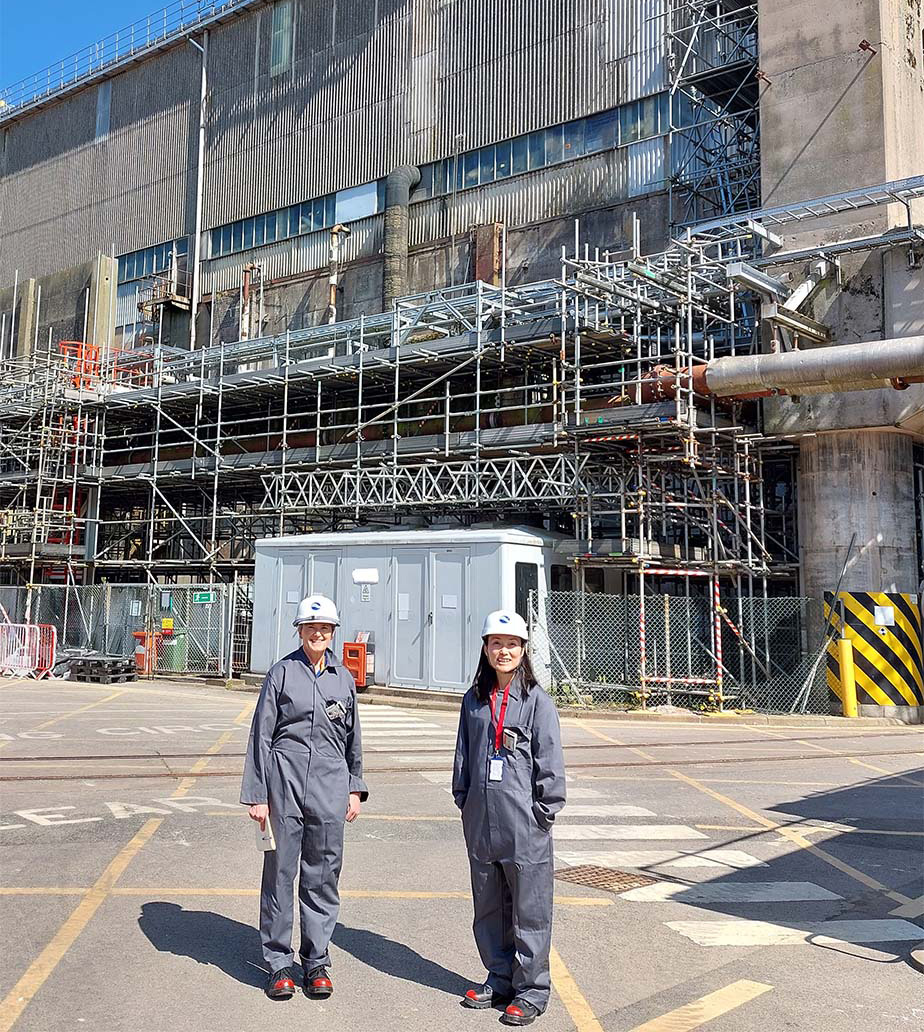SRNL’s ALTEMIS Sensors Make International Impact at Sellafield

Haruko Wainwright (right) of the Massachusetts Institute of Technology represents the ALTEMIS project at Sellafield Ltd. (Sellafield Ltd. staff photo)
The Advanced Long-Term Environmental Monitoring Systems project funded by the Department of Energy – Environmental Management Office of Technology Development is an ongoing effort at Savannah River National Laboratory (SRNL) with the overarching goal of improving the monitoring of groundwater contaminant plumes. ALTEMIS allows for a more affordable and proactive approach to monitoring groundwater contaminants while leveraging Artificial Intelligence and Machine Learning to predict the location and migration of contaminant concentrations.
During an ALTEMIS project presentation at the Waste Management Symposium in February of 2023, a representative from Sellafield Ltd. approached Will Jolin of SRNL regarding ALTEMIS sensors as a potential solution for a groundwater contamination monitoring issue at their site.
Sellafield is located near Seascale on the coast of Cumbria, England. This site stores high level radioactive waste in cylinders that rest roughly 75 feet in the ground. One of these cylinders developed a leak that was first discovered in 2019, resulting in a contaminated groundwater plume, however, the Sellafield team was unable to determine the location of the leak due to the dense subsurface infrastructure.
“Groundwater plumes can be thought of as complex geochemical systems,” said Carol Eddy-Dilek, program manager for ALTEMIS at SRNL. “Tracking the plume with sensor measurement of controlling variables instead of periodic sampling of contaminant concentrations allows for proactive management of the plume, so that unexpected contaminant migration can be predicted and addressed. This proactive approach puts us in a much better position to understand and manage the contaminants 10-20 years in the future.”
Haruko Wainwright, project co-lead from the Massachusetts Institute of Technology, represented the ALTEMIS team during her visit to the Sellafield site in May 2023. Wainwright and other members of the team worked with Sellafield to develop a mitigation strategy. SRNL created AI/ML models based on the strategy to support the plan before its implementation.
After SRNL provided analysis, Sellafield purchased sensors and began the approval process for their installation within existing wells on the site. Once the sensors are installed, they’ll collect data that will be provided to SRNL for analysis. SRNL will use these data to confirm the effectiveness using controlling variables. This will allow Sellafield to differentiate the underlying groundwater plume from where the contaminants are originating so they can locate and stop the leak.
The benefits of utilizing sensors for monitors include significant cost savings and the ability to place the sensors in the positions to best monitor the system. Several Department of Energy sites are currently using or planning to use ALTEMIS sensors, including the Moab site in Utah and the Oak Ridge Reservation in Tennessee, as well as a non-DOE facility, the Canadian Nuclear Laboratories. The ALTEMIS team, which also includes Lawerence Berkley National Laboratory, Pacific Northwest National Laboratory and Florida International University continue to present at a variety of conferences to educate the industry on the capabilities of the sensors and secure additional opportunities for ALTEMIS implementation.